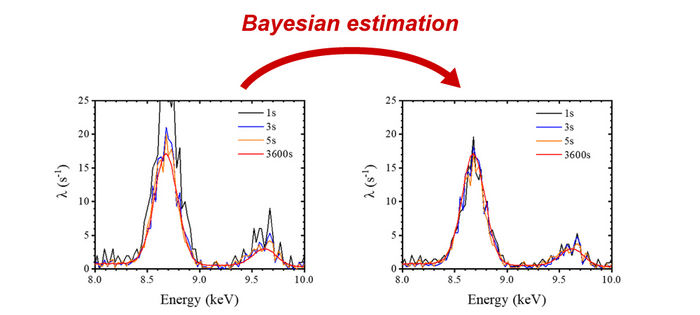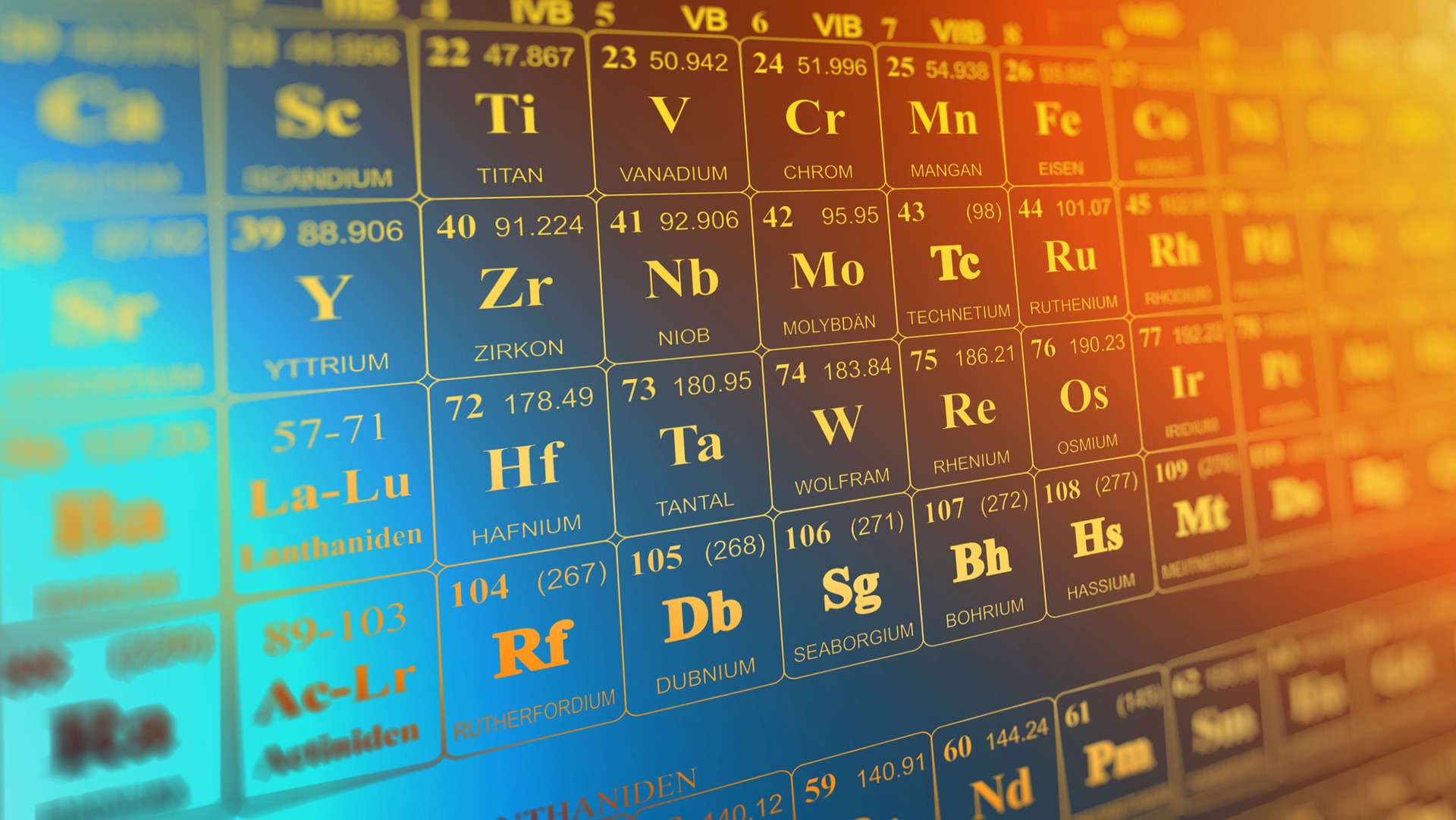Bayesian inference massively cuts time of X-ray fluorescence analysis!
Saved seconds add up to hours over multiple measurements
How can the component elements of an unknown material, such as a meteorite, be determined? X-ray fluorescence analysis can be used to identify an abundance of elements, by irradiating samples with X-rays and analyzing the spectrum they emit and can detect many elements simultaneously. For this reason, X-ray fluorescence analysis has been used to detect toxic heavy metals levels in soil. Current methods of X-ray fluorescence analysis take about 10 minutes to accurately identify elements, so new methods that can measure large quantities or take multiple measurements of unknown materials quickly are desired.

X-ray fluorescence spectra at 1, 3, 5, and 3600 seconds. The left graph shows measurements without Bayesian estimation, while the right graph shows measurements using Bayesian estimation, which tends to derive accurate values even at shorter measurement times.
Tsugufumi Matsuyama, Osaka Metropolitan University
A joint research group, including Dr. Tsugufumi Matsuyama, Professor Kouichi Tsuji, and Masanori Nakae, a second-year master's student at the Osaka Metropolitan University Graduate School of Engineering, and researchers from the Japan Atomic Energy Agency, has developed a new method by applying Bayesian estimation to X-ray fluorescence analysis. The group succeeded in reducing the measurement time of an X-ray fluorescence spectrum per measurement point, from 7 seconds to 3 seconds—reducing the time needed by 4 seconds to obtain analysis results that were not significantly different to the spectra obtained from measuring a glass standard sample for one hour. For example, when creating an elemental distribution, as many as 10,000 measurements may be taken, over a small area, depending on the sample. So, reducing the measurement time per point by 4 seconds, can reduce the total measurement time by 40,000 seconds—which is about 11 hours—when creating an elemental distribution.
Dr. Matsuyama stated, “We have successfully integrated analytical chemistry and informatics, using applied Bayesian inference to X-ray fluorescence analysis. Further studies are needed to determine whether it is possible to use this method to detect trace amounts of elements. If we can perform rapid elemental analysis in a non-destructive manner without needing to contact the sample, this technique could be popular in many fields, such as analysis of industrial products or waste materials carried on conveyor belts, and monitoring of ongoing chemical reactions.”
Original publication
Other news from the department science
Most read news
More news from our other portals
See the theme worlds for related content
Topic world Elemental analysis
Elemental analysis is a fundamental pillar of chemical research and enables the quantitative determination of the basic elements contained in a compound. It gives insight into the atomic composition and provides essential information about the structure and properties of molecules.

Topic world Elemental analysis
Elemental analysis is a fundamental pillar of chemical research and enables the quantitative determination of the basic elements contained in a compound. It gives insight into the atomic composition and provides essential information about the structure and properties of molecules.





























































